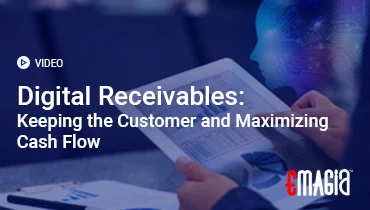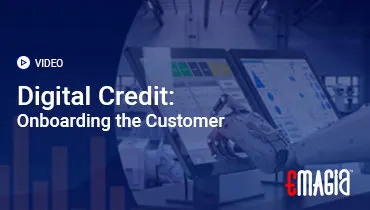Managing credit efficiently is one of the cornerstones of strong business financial health. For growing companies, overdue payments and poor receivables control can significantly hurt profitability. This is where Credit Management Software plays a transformative role. In this blog, we’ll explore everything you need to know about Credit Management Software — from what it is, why it matters, the features to look for, and how platforms like Emagia are reshaping modern credit control.
What is CreditManagement Software?
Credit Management Software refers to digital tools and platforms that help businesses manage credit decisions, automate collections, monitor customer payment behavior, and reduce financial risk. Instead of handling credit assessments and debt recovery manually, companies use these systems to streamline workflows and improve financial performance.
Why Businesses Need Credit Management Software
Every company that extends credit runs the risk of delayed payments or bad debt. Without proper credit controls, businesses often struggle with cash flow shortages, leading to lost growth opportunities. Credit Management Software offers automation, real-time tracking, and data-driven decision-making — all essential for maintaining a healthy order-to-cash lifecycle.
Key Benefits of Using Credit Management Software
1. Automates Credit Approvals
Instead of manually assessing each client’s credit profile, the software uses rules and scoring models to approve or reject credit applications instantly.
2. Reduces Days Sales Outstanding (DSO)
It accelerates collections by sending automated payment reminders and escalations — reducing DSO and improving working capital.
3. Minimizes Bad Debts
With predictive risk analysis, the system can flag risky customers early and suggest safer credit terms or prepayment requirements.
4. Improves Team Efficiency
Your finance team no longer needs to chase invoices or manually create reports. Everything is automated and centralized.
5. Enhances Customer Relationships
You’ll have a more professional, consistent approach to customer communication about credit and collections.
Core Features to Look for in Credit Management Software
Smart Credit Scoring
Evaluate customers based on internal and external credit data using automated scoring models.
Real-Time Risk Monitoring
Monitor customers’ payment behavior, credit limit usage, and early warning signs of financial trouble.
Automated Collections Workflows
Send reminders, escalation notices, and settlement offers automatically based on rules and payment behavior.
Dispute and Deduction Management
Log, track, and resolve disputes systematically, improving resolution time and customer satisfaction.
Integrated Dashboards and Reports
Generate real-time dashboards, aging reports, risk summaries, and collection effectiveness reports.
ERP & CRM Integration
Ensure seamless connectivity with platforms like SAP, Oracle, Microsoft Dynamics, and Salesforce.
How to Choose the Best Credit Management Software
Understand Your Credit Processes
Start by identifying your current credit challenges, volumes, and team workflows. Then map them to the system features.
Look for Scalability
Choose software that can grow with your business, whether you’re handling hundreds or thousands of credit accounts.
Evaluate Automation Capabilities
More automation means fewer manual errors and faster responses — critical for improving cash flow.
Consider User Interface & Training
Go for a platform that’s intuitive and provides onboarding support and training.
Examine Security & Compliance
Ensure the platform is compliant with financial regulations (like SOX, GDPR) and has robust data protection mechanisms.
Common Use Cases of Credit Management Software
- B2B Enterprises: Managing customer credit limits, aging reports, and credit terms across multiple regions.
- Retail & E-commerce: Handling customer financing, BNPL (Buy Now, Pay Later), and fraud risk scoring.
- Financial Institutions: Automating credit underwriting, portfolio monitoring, and collections for consumer loans.
Signs You Need Credit Management Software Now
- You’re frequently chasing overdue invoices
- Your cash flow is unpredictable
- Your finance team spends too much time on manual tasks
- You’re seeing rising bad debts or write-offs
- You lack visibility into credit risk
How Emagia Transforms Credit Management for Modern Enterprises
Emagia: Powering the Digital Order-to-Cash Journey
Emagia is a leading AI-powered platform built for digital credit, collections, and cash application. It offers intelligent automation and analytics for the entire order-to-cash cycle.
Intelligent Credit Processing
Emagia’s credit management module automates customer onboarding, credit approvals, and reviews using machine learning and external data integration (D&B, Experian, etc.).
Predictive Risk Insights
Its risk engines track customer financial behavior and provide early warnings, helping you make timely decisions before issues escalate.
Collections Automation
Emagia automatically prioritizes accounts, triggers personalized collection emails, and escalates cases based on payment behavior.
Seamless ERP Integration
Compatible with SAP, Oracle, and Microsoft Dynamics, Emagia integrates smoothly into your existing infrastructure.
Real-Time Dashboards
Get real-time views of credit exposure, collections status, and DSO performance — all in one place.
Global Scalability
Whether you operate in one region or globally, Emagia supports multi-currency, multi-language, and multi-entity operations.
With Emagia, companies have reported up to 30% faster cash flow, 40% reduction in overdue invoices, and significant time savings across teams.
Frequently Asked Questions (FAQs)
What is Credit Management Software used for?
Credit Management Software is used to automate and manage credit approvals, risk assessments, collections, and receivables processes to optimize cash flow and minimize bad debts.
Is Credit Management Software suitable for small businesses?
Yes, many CMS solutions offer scalable pricing and features that suit small and medium businesses just as well as large enterprises.
How does Credit Management Software reduce bad debt?
By identifying risky customers early using credit scoring and behavioral analytics, businesses can set appropriate credit terms or decline risky applications altogether.
Can Credit Management Software integrate with existing ERP systems?
Absolutely. Most modern CMS platforms are built to integrate with ERP systems like SAP, Oracle, NetSuite, and more.
How is Credit Management Software different from accounting software?
While accounting software focuses on recording financial transactions, CMS focuses on managing and controlling credit risk, receivables, and collections.
How long does it take to implement a Credit Management Software?
Implementation time varies by provider and business size, but it typically ranges from a few weeks to a few months.
Does Credit Management Software offer compliance support?
Yes, most solutions help ensure financial compliance with local regulations, tax laws, and audit requirements.
Can I automate collections with Credit Management Software?
Yes. Most systems allow you to create automated collection workflows including reminders, follow-ups, and escalations.
Final Thoughts
In an economy where liquidity is king, businesses can’t afford inefficiencies in credit control. Credit Management Software isn’t just a convenience — it’s a strategic investment. It strengthens financial discipline, improves working capital, and supports growth.
If you’re looking to digitize and future-proof your credit operations, platforms like Emagia offer a powerful, scalable, and AI-driven solution. Start automating today, and make your finance team smarter, faster, and more efficient.



